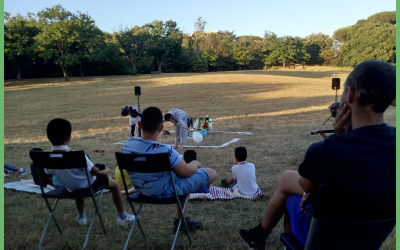The term “inspiration porn” refers to the phenomenon of disabled people being seen as inspirational due to living with their disability.
I recently saw a post on an Instagram meme page about a couple with Down’s Syndrome who had been told not to get married but had been married for 25 years.
The comments were full of phrases including “wholesome”, “there’s hope for us after all” and “meanwhile I can’t even get a text back”. For some reason, most viewers of this content saw the disabled couple as “other” – in a category far removed from them.
The term “inspiration porn” was coined by Australian disability activist Stella Young, to refer to the phenomenon of disabled people being seen as inspirational due to living with their disability. It is targeted at non-disabled people, to “inspire them” and make them feel better about their lives because it could be worse if they were disabled and/or a disabled person can do this so what is your excuse?
Inspirational porn comes from an othering gaze, where disabled people are seen as an “other”, different from the norm or the viewer.
From the comments, I could see the othering in effect. “There’s hope for us yet” suggests that if disabled people can find lasting love then, they as (presumably) non-disabled people can be reassured of higher odds for themselves. “Meanwhile I can’t get a text back” implies that there is some resentment that they, as a non-disabled person, are having a harder time with love than a disabled person (who are generally thought of as undesirable).
The problem is that depictions of disabled people in the media are skewed into two main categories – pitiful or inspirational. Pitiful depictions are usually showing helpless disabled people or newly disabled people struggling to come to terms with their disability. Inspirational portrayals are seen as positive but in fact they are harmful. They make disabled people seem superhuman for simply living their lives. We rarely see disabled people in the media as everyday people living everyday lives while having a disability.
Inspiration porn puts all the burden on disabled people to fight a battle to succeed in an ableist, unaccommodating world.
It allows non-disabled people to ignore their responsibility and power to change this harmful status quo and instead propagates the idea that with only determination, disabled people can have a better quality of life and achieve their goals. This is in contrast with the social model of disability which states that disabled people are more disabled by their environments than their disability. For example, lack of wheelchair access to a cinema disables a wheelchair user from participating in watching films at the cinema, not their bodily impairment.
In her TED Talk, Stella Young explains that disabled people are “not considered ‘real people’, they are there to inspire. We’ve been taught that disability is a ‘Bad Thing’, and to live with a disability makes you exceptional.”
So many people don’t understand disability or disabled people – the message we are taught about disability is that your life is over once you become disabled, disabled people cannot achieve anything or live a normal life. Inspiration porn arises because of this simultaneous devaluing of disabled lives and celebration of disabled people who are able to live their lives as fully as possible, thanks to disability accommodations and assistive devices.
To fight inspiration porn, we should take time to learn about disabilities and how to accommodate them so that we do not further disable disabled people beyond their bodily impairments. So next time you come across a social media post about disabled people, before you engage, ask yourself whether the post frames disabled people as an “other” for the purpose of inspiring non-disabled people.
Selasie












0 Comments